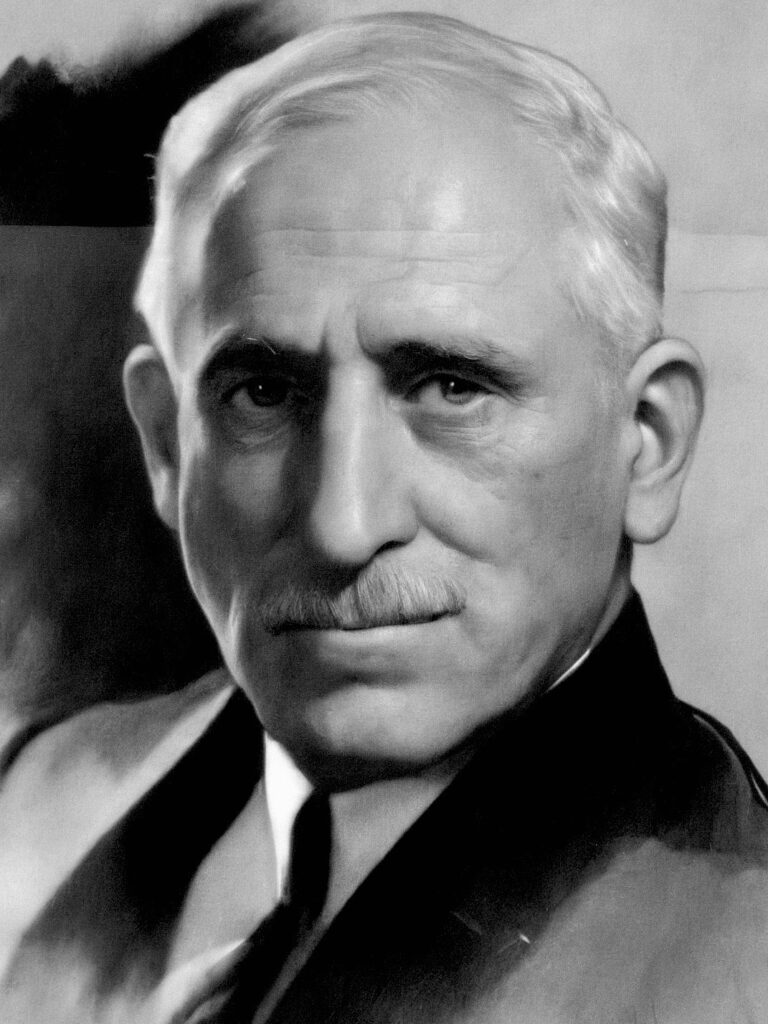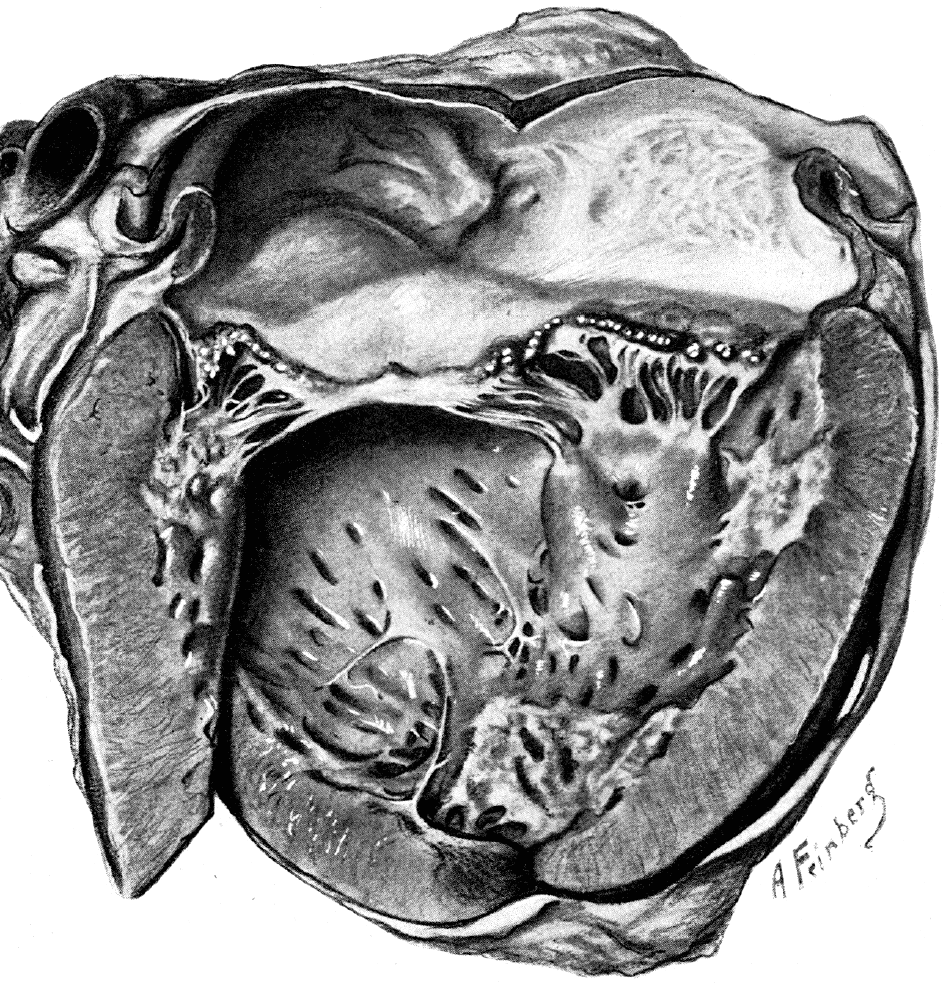Emanuel Libman

Emanuel Libman (1872-1946) was an American physician.
Libman was an influential American internist and pathologist, best known for his co-description of Libman-Sacks endocarditis and for his legendary diagnostic abilities. Born in New York to Jewish immigrants from Prussian Poland, Libman trained at Columbia’s College of Physicians and Surgeons before undertaking extensive postgraduate studies in European medical centres including Vienna, Berlin, and Graz. Renowned for his unorthodox and lightning-fast clinical methods, he combined laboratory excellence with a masterful bedside presence.
Libman made major contributions to the understanding of subacute bacterial endocarditis, the classification of blood stream infections, and the broader field of bacteriology. In 1924, with Benjamin Sacks, he described the form of non-bacterial thrombotic endocarditis now termed Libman-Sacks endocarditis, particularly in patients with systemic lupus erythematosus (SLE).
Libman published some of the first physical signs and symptoms associated with coronary thrombosis, such as the association between angina pain in essential hypertension and cardiac strain or aortic disease; and acute engorgement of the liver correlating to right coronary artery thrombosis.
A bachelor who led a demanding, austere life, Libman was a revered figure at Mount Sinai Hospital where he spent his entire career. He was a dedicated teacher, mentor, and supporter of Jewish and immigrant physicians facing discrimination in American institutions.
He maintained friendships with luminaries such as Albert Einstein and Gustav Mahler, whom he famously diagnosed with infective endocarditis. Known for his intellectual intensity and charisma, he became a figure of public fascination, profiled in TIME and The New Yorker, and celebrated with a gala 60th birthday attended by over 600 peers.
Biography
- 1872 – Born August 22 in New York City to Fajbal Libman, a picture-framer who emigrated from Prussian Poland in 1865
- 1891 – A.B. degree from the College of the City of New York
- 1894 – M.D. degree from the College of Physicians and Surgeons, Columbia University; intern at Mount Sinai Hospital.
- 1896-1897 Undertook postgraduate training in Berlin, Munich, and Vienna. Studied under Theodor Escherich (1857–1911), which kindled his lifelong interest in bacteriology. Discovered Streptococcus enteritis, isolating it from the blood of an infant with severe diarrhoea. Despite the call from Ludwig Aschoff (1866-1942) with “Uber den Enterokokkus Libman“, the eponymous term Streptococcus Libman was not retained.
- 1897 – Assistant Pathologist at Mount Sinai Hospital
- 1904 – Established the department of bacteriology and serology in a new laboratory building at Mount Sinai Hospital
- 1906 – Pioneered use of blood cultures to diagnose bacterial infections.
- 1909 – With Herbert Celler, published a landmark paper on subacute bacterial endocarditis describing 43 patients, 19 autopsied. Cultures showed consistent presence of a non-haemolytic streptococcus, Streptococcus viridans.
- 1910 – Associate Professor of Clinical Medicine at the faculty of the College of Physicians and Surgeons, Columbia University.
- 1911 – Diagnosed Gustav Mahler (1860–1911) with subacute bacterial endocarditis, confirming the diagnosis with his assistant George Baehr (1887–1978) through positive blood cultures.
- 1912 – Gold Medal of the American Medical Association for his work on endocarditis publishing 89 cases of endocarditis, affirming S. viridans as a key pathogen in subacute forms.
- 1914-1925 Chief of a medical service, Mount Sinai Hospital
- 1924 – With Benjamin Sacks (1896–1971), described a non-bacterial form of endocarditis in systemic lupus erythematosus (SLE), later termed Libman–Sacks endocarditis.
- 1925 – Founding member and later president of the American Friends of the Hebrew University. Served on the Board of Governors and visited Palestine multiple times, lecturing and contributing to postgraduate medical education.
- 1932 – 60th birthday celebrated at the Waldorf-Astoria Hotel by over 600 students and peers
- 1935 – Columbia Alumni Medal for distinguished achievement
- 1946 – Died June 28 at Mount Sinai Hospital
In the same manner as Claude Bernard personified physiology, Libman is medicine itself.
Alexis Carrel (1873-1944); Nobel Prize 1912 In: 1932 anniversary book for Libman’s 60th birthday
Medical Eponyms
Libman and Endocarditis
Libman was instrumental in the modern understanding of subacute bacterial endocarditis. He introduced the term, refined the diagnostic process through systematic blood cultures, and highlighted the distinctive microbiological profile of Streptococcus viridans infections.
With Herbert Celler, in 1910, he published a landmark paper The Etiology of Subacute Infective Endocarditis describing 43 patients, 19 autopsied. He emphasized culture-based diagnosis demonstrating consistent presence of a non-haemolytic streptococcus, S. viridans.
Libman famously diagnosed composer Gustav Mahler with endocarditis in 1911, confirming the diagnosis through positive blood cultures that yielded attenuated streptococci, later recognised as pathognomonic of the condition.
Libman-Sacks endocarditis (1924)
Libman-Sacks endocarditis (LSE) is a form of nonbacterial thrombotic endocarditis (NBTE), characterized by sterile, verrucous vegetations typically found on the mitral and aortic valves. LSE is regarded as both a cardiac manifestation of systemic lupus erythematosus and, in recent years, of the antiphospholipid syndrome (APS). It is commonly complicated with embolic cerebrovascular disease.
1924 – Libman and Benjamin Sacks (1880–1949) published A hitherto undescribed form of valvular and mural endocarditis and describe four cases of “atypical verrucous endocarditis” in patients with features now recognized as SLE, establishing the entity now known as Libman–Sacks endocarditis.
The vegetative lesions on the heart valves were capped by blood platelet thrombus deposit showing various degrees of hyaline change… In places, the vegetations were covered with endothelium but large areas remained denuded… The endocarditic lesions in all cases were free of demonstrable bacteria
Libman-Sacks vegetations: sterile fibrofibrinous vegetations that favour the left-sided heart valves and usually form on the ventricular surface of the mitral valve. Moyssakis et al (2007) examined the echocardiographic findings of 342 consecutive patients with SLE and found 11% of these patients had Libman-Sacks vegetations

closure of mitral valve extending in places to the free edge. Areas
of endocarditis on papillary endocardium and adjacent mural endocardium; isolated patch of mural endocarditis in region of apex of ventricle. Adapted from Libman E, Sacks B. Arch Intern Med. 1924
Janeway lesions
In 1906, Libman who was a student of Edward Gamaliel Janeway (1841-1911) applied the eponym ‘Janeway lesion‘ to lesions on the palms or soles in infective endocarditis. Libman pointed out that these lesions were not tender, in contrast to the exquisitely painful Osler node
I would like to refer to a point which has been of great value… “the small hemorrhages in the palms and soles with slightly nodular character” I learned from Dr. Janeway when I had the privilege of serving under him…(keep) a sharp lookout for them as they will often direct attention to an acute endocarditis to which there was no other clue.
1923 – Libman originally considered Janeway lesions to be pathognomonic for acute bacterial endocarditis but later remarked that he had also seen them in three patients with subacute bacterial endocarditis.
Embolic lesions occur with great frequency in the acute and subacute bacterial cases. They consist of petechiae, Janeway lesions, Osler (tender cutaneous) nodes and purpura
Libman, 1923:815
1949 – Libman and Friedberg emphasized the fact that Janeway lesions were infrequent; more characteristic of acute bacterial endocarditis than subacute bacterial endocarditis; and were never painful. They noted that Janeway lesions may appear erythematous, rather than haemorrhagic, particularly in subacute bacterial endocarditis
Libman and Mahler
Libman diagnosed the fatal endocarditis of Gustav Mahler on 25th February 1911. Mahler’s personal physician (Joseph Fraenkel) suspected the onset of endocarditis and called in Libman (‘the world authority and a man of monolithic certainties‘) from the Mount Sinai Hospital. The survival rate in pre-antibiotic days was almost zero. Mahler demanded to be told the truth, then asked to be taken home, to Vienna where he died 2 months later.
Libman had many famous patients including Fanny Brice (1891-1951), Sara Bernhardt (1844-1923), Thomas Mann (1875-1955) and Albert Einstein (1879-1955)
To the noble-minded Dr. Libman with the secret-divining eyes.
Albert Einstein 1954
Libman and Medical Zionism
Libman was a fervent supporter of Jewish medical education and the Zionist movement. As a member of the Board of Governors of the Hebrew University and President of the American Friends, he donated generously to its development and helped establish its postgraduate and research institutes. He lectured in Palestine and contributed to building Hadassah Hospital’s academic infrastructure.
Major Publications
- Libman E. Weitere Mitteilungen über die Streptokokken-Enteritis bei. Säuglingen. Centralblatt für Bakteriologie, Parasitenkunde und Infektionskrankheiten. 1897;XXII:376-382
- Libman E. On some experience with blood-cultures in the study of bacterial infections. Johns Hopkins Hospital Bulletin. 1906; 17: 215–228 [Janeway lesions]
- The American Journal of the Medical Sciences
- Libman E, Celler HL. The Etiology of Subacute Infective Endocarditis. Table. American Journal of the Medical Sciences. 1910; 140: 516-527.
- Libman E. A Study of the Endocardial Lesions of Subacute Bacterial Endocarditis. American Journal of the Medical Sciences. 1912;144: 313-327.
- Libman E. The clinical features of subacute streptococcal (and influenzal) endocarditis in the bacterial stage. Medical Clinics of North America 1918; 2(1): 117-152
- Libman E. Some observations of thrombosis of the coronary arteries. Transactions of the Association of American Physicians. 1919; 34:138-40
- Libman E. Characterization of various forms of endocarditis. JAMA 1923; 80: 813-818
- Libman E, Sacks B. A hitherto undescribed form of valvular and mural endocarditis. Arch Intern Med. 1924; 33(6): 701–737 [Libman-Sacks endocarditis]
- Libman E, Friedberg CK, Christian HA. Subacute Bacterial Endocarditis. Oxford University Press, 1941.
References
Biography
- Contributions to the Medical Sciences in Honor of Dr. Emanuel Libman by His Pupils, Friends and Colleagues. 3 Volumes. 1932
- Oppenheimer BS. In Memoriam–Emanuel Libman (1872-1946). Bull N Y Acad Med. 1947 Feb; 23(2): 116–117.
- Oppenheimer BS, Friedberg CK. Emanuel Libman (1872-1946) Journal of The Mount Sinai Hospital 1947; 13(5): 215-223
- Baehr G. Emanuel Libman: 1872-1946. American Jewish Year Book 1948
- Behrman SN. Hyper or Hypo? Dr Emanuel Libman. The suspended drawing room. 1965: 121-136
- Levy D. Gustav Mahler and Emanuel Libman: bacterial endocarditis in 1911. Br Med J (Clin Res Ed). 1986 Dec 20-27;293(6562):1628-31
- Aufses AH Jr, Niss BJ. This House of Noble Deeds: The Mount Sinai Hospital, 1852-2002. 2002: 24-26
- Lebrecht N. Why Mahler?: How One Man and Ten Symphonies Changed the World. 2011: 218-219
- Pinnelas R. Letters from Libman: Dispatches from an American Abroad. J Med Biogr. 2020 May;28(2):108-115.
- Emanuel Libman (1872-1946) Mahler Foundation
Eponymous terms
- Aufses AH, Niss BJ. This House of Noble Deeds. The Mount Sinai Hospital, 1852-2002. New York University Press. 2002
- Geller SA. Infective endocarditis: a history of the development of its understanding. Autopsy Case Rep. 2013 Dec 31;3(4):5-12.
- Ibrahim AM, Siddique MS. Libman-Sacks Endocarditis. 2023 Sep 4. In: StatPearls
- Hennebicq S, Silberberg D, Dubois P. Libman-Sacks endocarditis. Acta Cardiol. 2024 Dec 24:1-2.
Eponym
the person behind the name
Bret P. Nelson, MD, AEMUS-FPD, FACEP. Professor of Emergency Medicine, System Vice Chair for Education in the Department of Emergency Medicine, System Chief of the EM Ultrasound Division Mount Sinai Hospital | Sinai EM |


Dr. Libman is an ancestor of mine. Very proud to be related to him. Our family had, has many doctors. I am sure, knowing today what I know about psychics, I feel he had that ability. Brilliance beyond comparison.
His parents are my great great grandparents. Interested to know if you have photos of the family?
[…] https://litfl.com/emanuel-libman/ […]